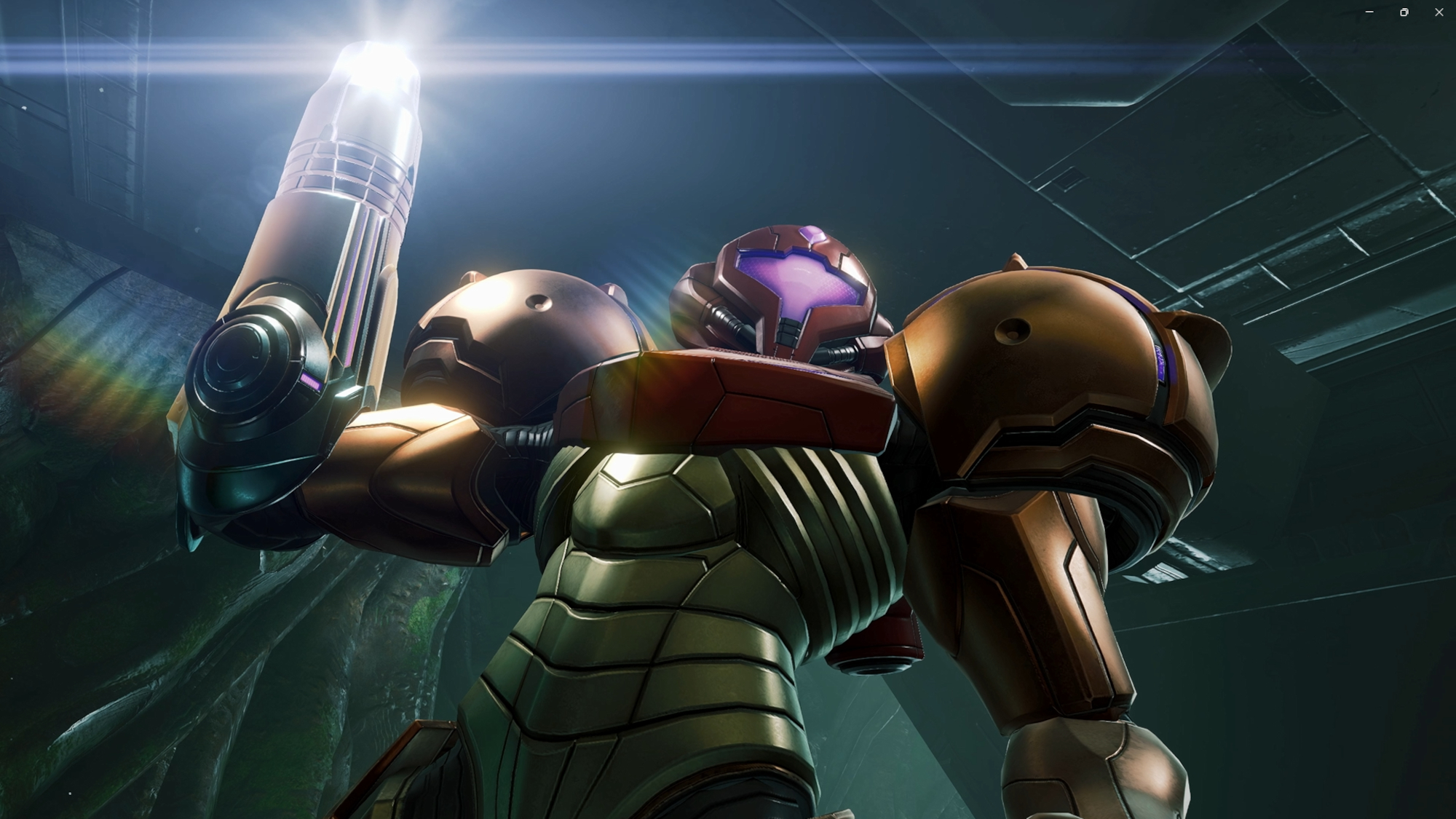How is AI art made? Here's everything you need to know
A simple guide to everything you need to know about AI art
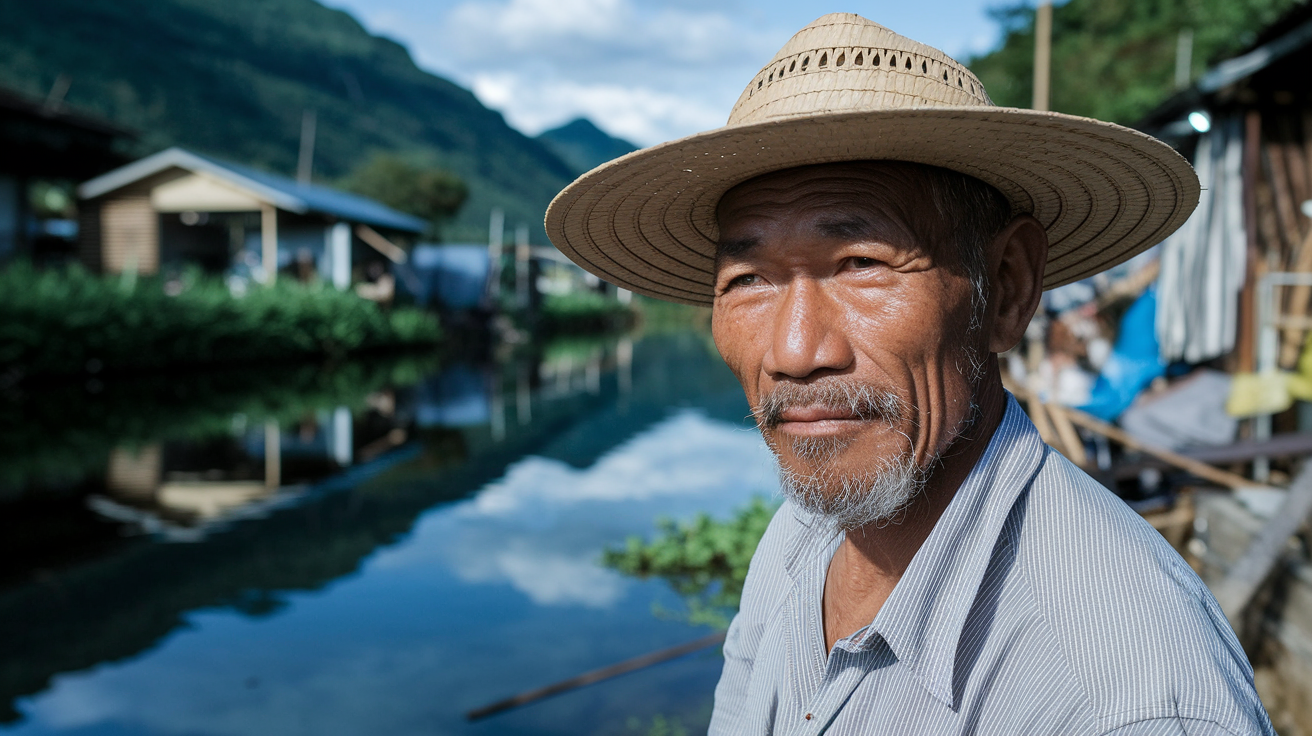
You can't turn a metaphorical corner nowadays without stumbling across one example or another of AI-generated art. Even major companies like Adobe and Getty have been forced to embrace AI to stay relevant. But for many, it's all a mystery.
How does it all actually work?
Creating images using AI and a text prompt was the first mainstream AI application to astonish the world way back in 2022. From its humble, ugly beginnings, the market has now grown into a huge sprawling empire, ranging from enthusiast hobbyist tools, which run on a home computer, to enterprise-level design products used everywhere from Hollywood to Paris fashion houses.
And there's no sign of this growth slowing down anytime soon. According to Market.us, the generative AI art market is expected to be worth around $40 billion by 2033, up from $3.2 billion in 2023. That's an astonishing growth rate by any measure.
But how exactly does AI create a gorgeous piece of art or a realistic-looking photograph, simply using text typed into a chat box?
Behind the scenes of generative AI
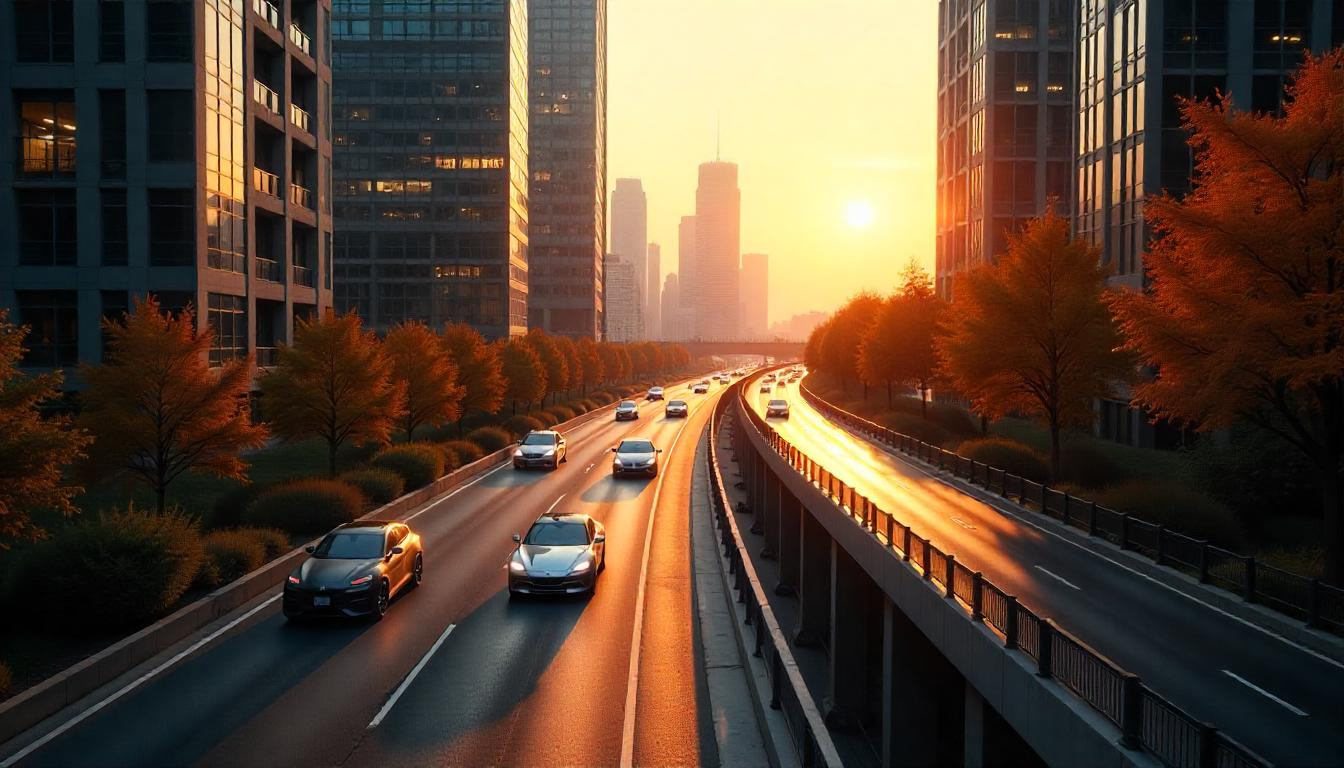
Let's dispel a huge myth right up front. Generative AI art models do not store billions of photos or artwork from around the world in a huge database. That's completely incorrect. Instead these systems are trained on the global corpus of imagery, in the same way an art student learns in detail about van Gogh, Warhol or Rembrandt as part of their studies.
This training gives the model a fundamental understanding of how different forms of art are created, in terms of things like light, brushstrokes, perspective and such like. This applies also of course to photographs and other aspects of design and imagery. This training is the fundamental baseline it uses to generate imagery on demand.
Get instant access to breaking news, the hottest reviews, great deals and helpful tips.
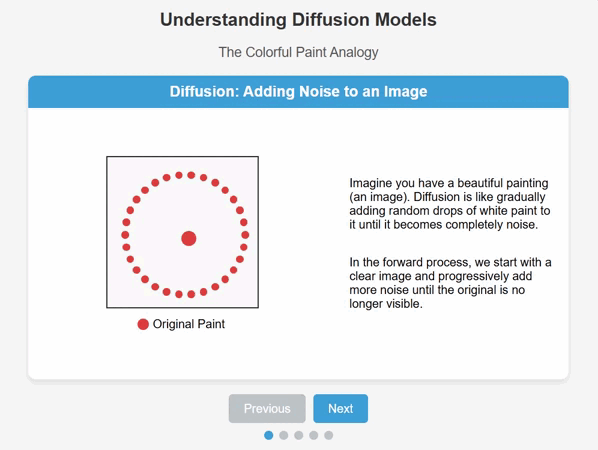
It does this through a process of what is known as diffusion. Given a photograph of a house, the AI model breaks it down into millions of datapoints which represent the edges, the curves, the textures and everything else that makes up that image. It is these digital bits that are stored in huge datacenters for later use.
When the user later launches an AI app and types 'draw me a picture of a house', the system searches through its massive datastore and recreates what it understands as a house from its training. It does this by starting with a completely noisy image, and removes noise until the image appears.
This is not too far from the process by which a sculptor reveals the final sculpture by chipping away at a block of marble until their vision appears.

Much of the public confusion over AI 'stealing art', comes from the misunderstanding as to how the process works. An AI can recreate any style it's been trained on, in the same way an art student can recreate a Warhol piece by following the same kind of color, composition, and perspective rules of a Warhol painting.
But like a student, an AI image generator almost always creates innovative original imagery using all the knowledge of its training.
Even though it can produce works which mimic existing art, it's well established in law that you cannot copyright a style, only the exact piece that has been created by the artist.
These questions, and more, are now making their way through the legal systems of the world, as we all come to grips with the idea of artificial intelligence systems which can reproduce close to anything in an instant.
What are the best AI art generators at the moment?
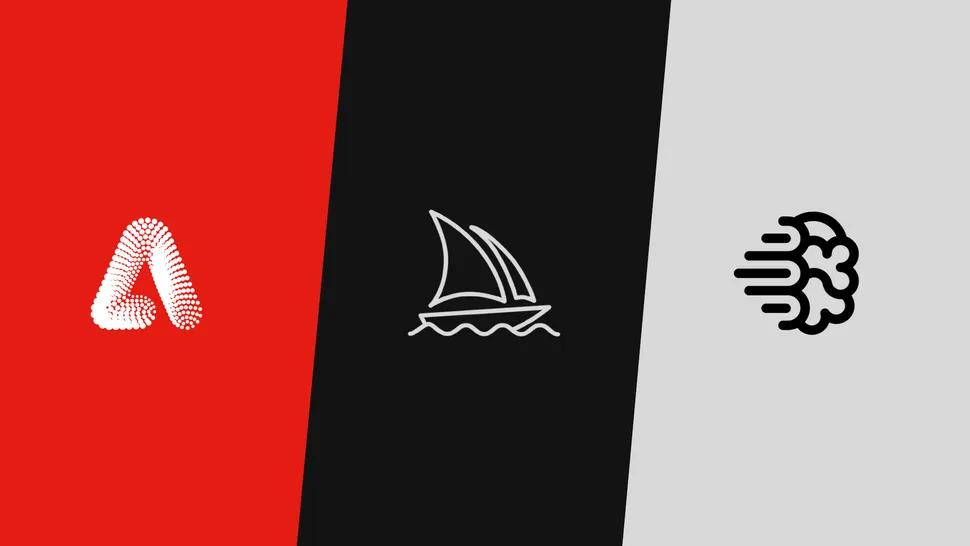
GPT-Image-1
The current undisputed champion of all image generation systems is OpenAI's GPT-Image-1 product. Launched in late April of this year, this stunning AI model combines two absolute knockout features. First it exhibits remarkable prompt adherence, which basically means it outputs exactly what you ask for in the text box.
The second, and probably more important, feature is impeccable text handling. Up until now reproducing text in AI images has been very hit or miss (actually, more miss). GPT-Image-1 has turned this dire situation on its head, exhibiting something like a 99% hit rate for producing exactly the text you ask for, which is astonishing
Midjourney is the veteran of AI image generators, being one of the first of the products which delivered consistent superb image quality, time after time. At one time the product was almost the de facto standard for a large percentage of art and design professionals, simply because of this consistency.
However time moves on, and it's less of a force than it used to be, although a recent upgrade to Version 7 has propelled it firmly back into the list of all-time greats.

Freepik
This relatively recent arrival on the AI image generation scene is one of my personal favourites. Based on the powerful Flux AI image model, Freepik excels at delivering what you ask for, both in image terms and also textual.
One of my recent tests for Tom's Guide had it beating out a heavyweight rival in a surprising way. The Mystic 2.5 Flexible model on the service was spectacular, and produced some stunning imagery on demand.
The baseline image generation is supported by a range of really powerful and useful tools, including top-notch editing and an excellent product mockup generator. The sketch function also adds an innovative way to customize your image creation vision in real time.
Check out our continually updated list of the top AI image generators for more great services.
Can I make AI art for free?
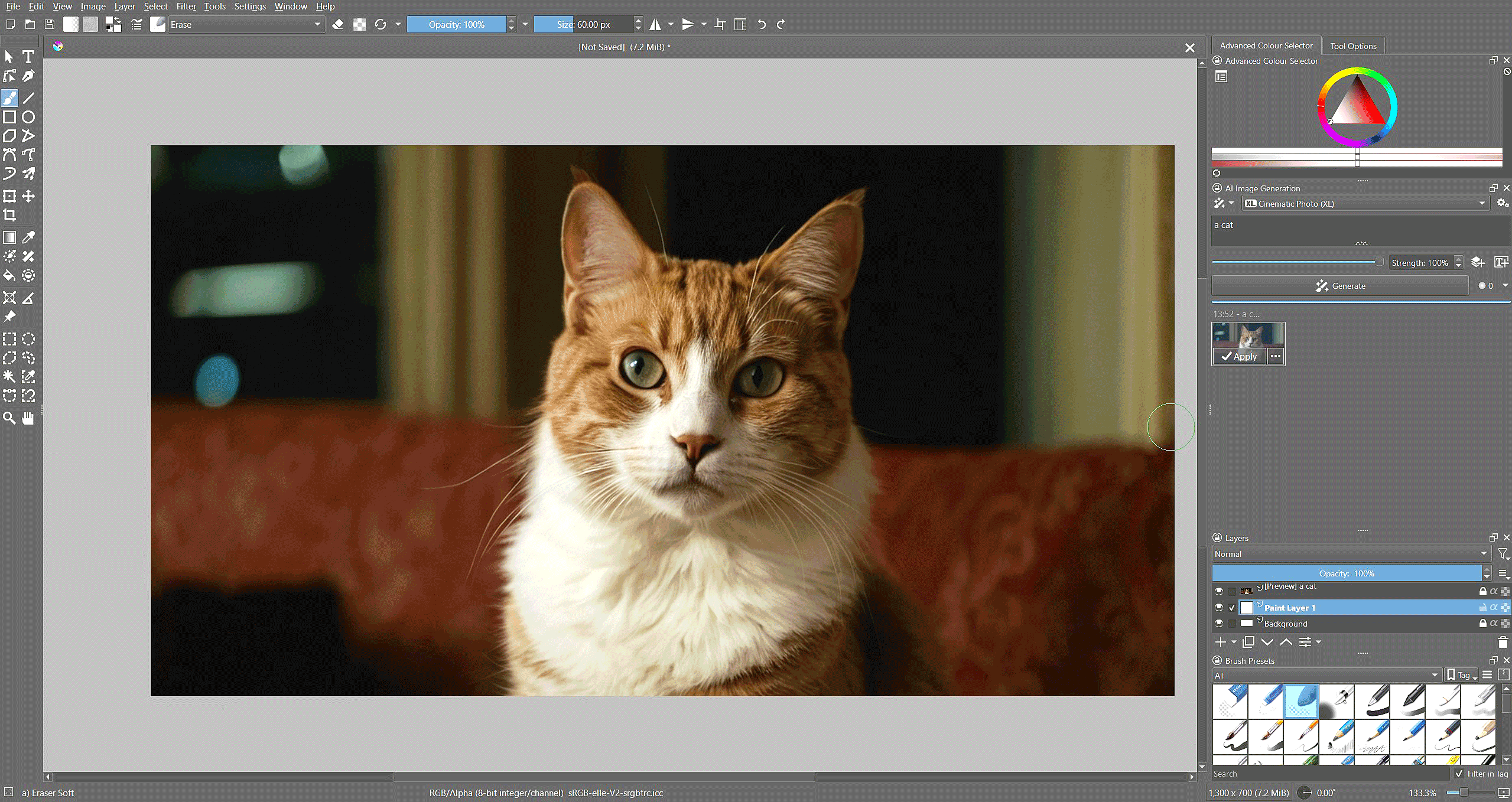
Not all AI image generators cost money. There's a growing number of free and open source alternatives which you can use on your home computer, without needing to sign up to an online cloud service.
The penalty you pay for free, is the fact that they generally require a reasonably powerful computer in order to operate, and also some technical knowledge to get them installed and running. Here's a couple of my favorite options.
Krita
This free open source art tool started life over 20 years ago as an alternative to commercial products such as Adobe Photoshop and Corel Painter. It has since gone on to hold a triumphant position as a powerful artist toolbox. The AI ability has recently been added via a sophisticated plugin, which is becoming increasingly integrated into the main product.
The beauty of Krita lies in its extensive editing functionality and intuitive AI features. The fact that it also uses local AI models stored on your computer, is a bonus for those who prefer to keep their creations close at hand.
Pinokio
One of the best ways to experiment with the various free and open source image generation tools is to download and install Pinokio. This easy-to-use product has a gallery of some of the best open source AI products in the world. That includes a wide range of image tools such as Stable Diffusion, Fooocus, Forge and PhotoMaker2.
The best bit? All of the tools are a one-click install away. As long as you have the processing power and storage space, you're good to go.
How to detect AI-generated art
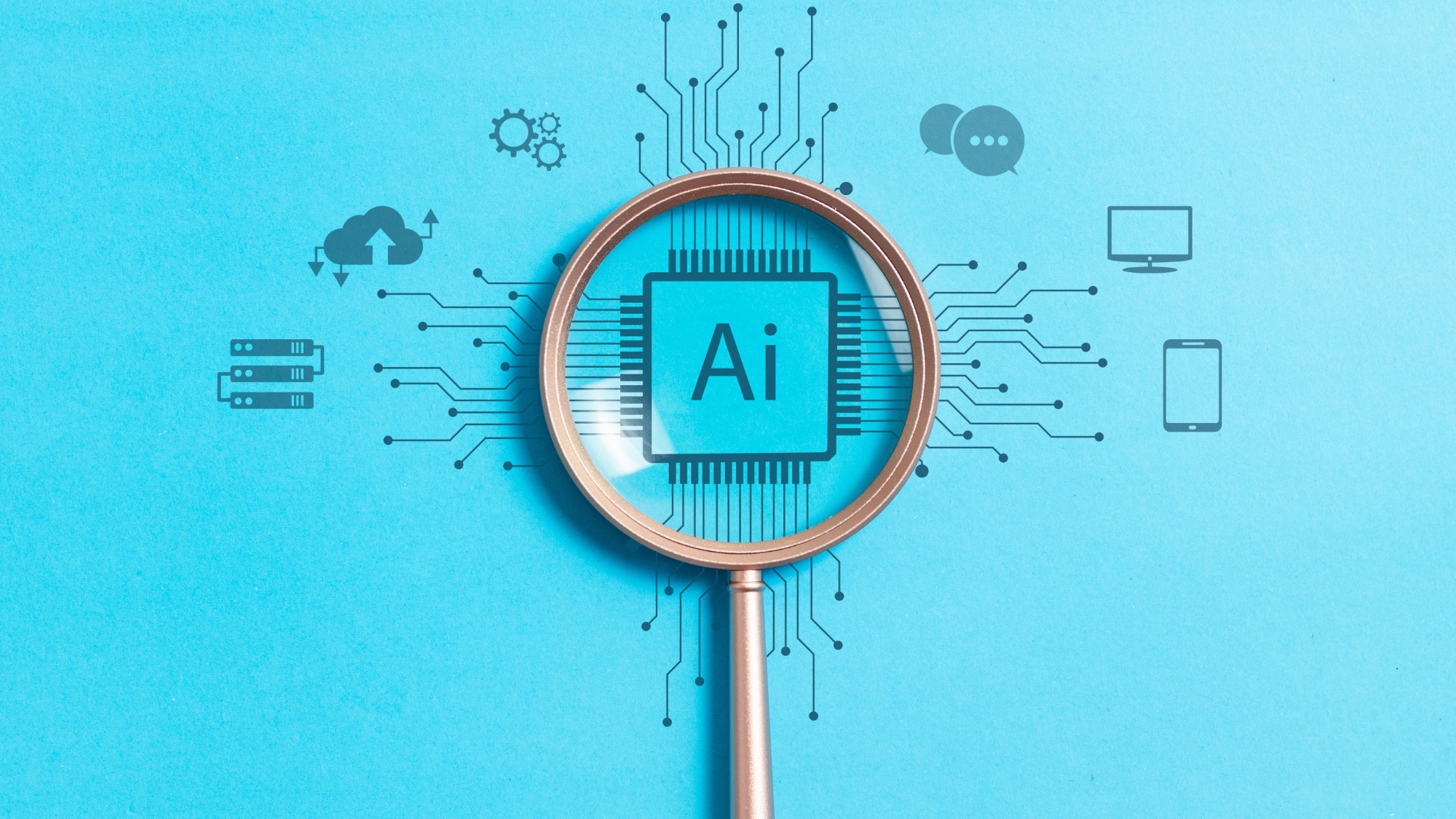
As AI-generated art becomes more sophisticated, telling it apart from human-created work can be tricky. However, there are key signs and tools that can help you spot the difference.
- The truth is in the details. Inconsistent or unnatural features such as asymmetrical faces, distorted hands, too-perfect lighting that doesn’t match the scene. or objects interacting in impossible ways are all red flags.
- Extremely smooth or plastic-like texture. Skin in AI art can look unnaturally flawless, proving the image was AI-generated. Dead giveaways include an image of a human missing the pores, wrinkles or subtle imperfections found in natural skin.
- Repetitive patterns. AI may repeat textures or artifacts in backgrounds due to limitations in its training data. When in doubt, check the background. AI-generated images often contain repeating textures, shapes or artifacts that have been recycled from other images because of how the AI learns and constructs images.
- Lack of conceptual depth. While AI can mimic styles, it often looks flat, lacking a deeper meaning. A human artist’s work usually conveys intention, emotion, or a narrative, whereas AI-generated pieces may feel hollow or random.
- Illogical elements: AI sometimes combines elements that don’t make sense such as mismatched reflections, impossible physics or perspectives that don’t align.
While some chatbots such as Gemini add AI watermarks on the image generated, that isn't always the case. When in doubt run it through an AI art detector. This one is my favorite.
Of course, art professionals can spot AI-generated work by analyzing style, composition, and color choices. Their trained eyes pick up on patterns and inconsistencies that algorithms tend to produce.
Final Thoughts
This is just the beginning. AI generated video is now rapidly taking over from image and photographs, and lining up in the rear is AI music. The genie is out of the bottle, and like it or love it, we're all going to be using these tools more in the coming months and years.
More from Tom's Guide
- These 7 Copilot prompts supercharge my workday — and work even better than I expected
- These 5 Claude prompts are guaranteed to boost your productivity
- What is generative AI? Everything you need to know

Nigel Powell is an author, columnist, and consultant with over 30 years of experience in the technology industry. He produced the weekly Don't Panic technology column in the Sunday Times newspaper for 16 years and is the author of the Sunday Times book of Computer Answers, published by Harper Collins. He has been a technology pundit on Sky Television's Global Village program and a regular contributor to BBC Radio Five's Men's Hour.
He has an Honours degree in law (LLB) and a Master's Degree in Business Administration (MBA), and his work has made him an expert in all things software, AI, security, privacy, mobile, and other tech innovations. Nigel currently lives in West London and enjoys spending time meditating and listening to music.
You must confirm your public display name before commenting
Please logout and then login again, you will then be prompted to enter your display name.








